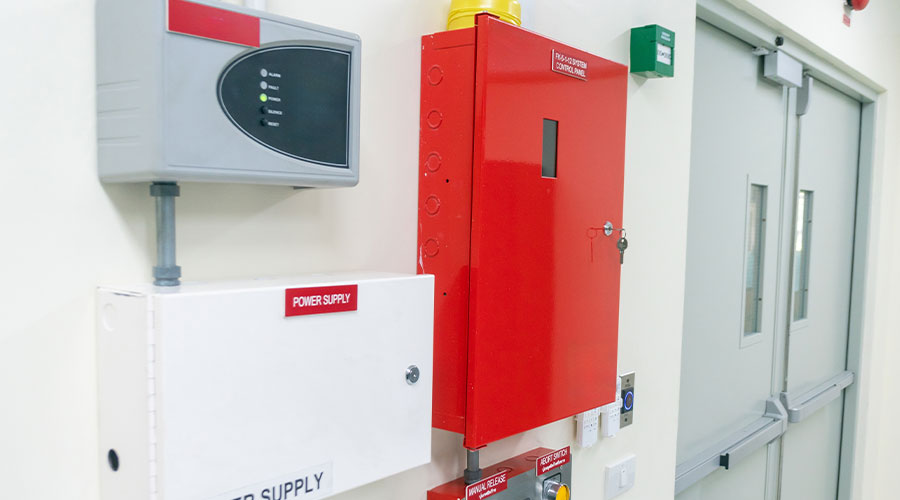LEED-EB Certification Creates Challenges and Benefits
By Steve Schuster, Associate Editor
OTHER PARTS OF THIS ARTICLEPt. 1: This Page

Ann Bryant,
Director of Facilities Management Division,
Oak Ridge National Laboratory,
Oak Ridge, Tenn.
|

Kevin Kelley,
Service Operations Supervisor,
Siemens Building Technologies Division,
Beltsville, Md.
|

Israel Martinez,
Technical Manager of the
Infrastructure Operations Department,
Sandia National Laboratories,
Albuquerque, N.M.
|
Attempting to get building occupants and staff on board with resource conservation can be daunting, but ultimately the process creates a rewarding opportunity. Maintenance and engineering managers are discovering that Leadership in Energy and Environmental Design for Existing Buildings (LEED-EB) certification is one way to achieve both environmental sustainability and bottom-line benefits for the organization.
Q. Why did your organization seek LEED-EB certification?
BRYANT: We're a U.S. Department of Energy (DOE) laboratory, so we really try to emphasize sustainability in our operations. We wanted to look at areas we could improve upon on our operations side, and we have an aging campus. We wanted to refurbish and renovate facilities that we still feel have a valuable use to the organization. We want to do that in a sustainable manner.
KELLEY: At the time, we were moving from a building that we were outgrowing. The timing was just right. The LEED stuff was starting to take off. Being in building automation controls, we do energy control all along. It just kind of made sense that we should go for LEED certification to prove that our technologies can help people obtain LEED certification.
MARTINEZ: At the time, our energy-management program was looking to get as many buildings LEED certified to meet the executive order. It's part of our requirement as a federal facility to have a certain percentage of our buildings meeting the LEED certification requirement. ... When we saw a customer that was interested in helping us to reduce energy use in their building, we jumped all over it and decided to give it a try.
Q. When working toward LEED-EB certification, what steps did you take to prioritize your actions?
BRYANT: First, we got some of our facility engineers to go through the LEED certification process. We wanted to make sure we had some trained personnel here onsite to be able to support these projects, so we had a couple of the engineers go through the LEED AP (accredited professional) process and get their certifications. We started looking at the different credits and prerequisites ... to make sure that our site processes and procedures aligned with the requirements.
KELLEY: At the time, we didn't know a whole lot about the processes. That's when we brought in a consulting firm, RTKL from Baltimore, to help us define the processes and prioritizations.
MARTINEZ: First of all, we acquired the services of a LEED AP. ... She put together a plan of meeting the DOE order of 30 percent energy reduction by 2015 (and) 16 percent water reduction by 2015. And 15 percent of our buildings had to meet the high performance of sustainable building standards by 2015.
Q. How did technology, specifically software, help you in the certification process?
BRYANT: We relied heavily on metering and sub-metering and used a building automation system to feed that data in so that we could see actually what the building was doing and see what impacts the modifications we were making would have on the efficiency of the building. We installed CTs (current transformers) on all of the circuits to monitor all of the usage down to the breaker and tie that into the building automation system. We were able to use that data to communicate to the tenants how much energy they were using on a daily basis.
MARTINEZ: LEED certification is a lot of documentation, way more than I expected. ... Having everything in electronic format was a big help, not having to push a bunch of paper. The LEED process with the USGBC was very streamlined electronically, so we basically used our Word, Excel and PowerPoint to just attach documents to the certification submittal.
Q. What were the biggest challenges during the process? How did you address them?
BRYANT: Given our funding, we prioritized which ones we wanted to go for. We downscaled quite a bit. Now that we've gone through the process, we know how many points we will get for each modification. We've rightsized, given the funding we had available for those renovations. Scrubbing through our procedures and policies to make sure they align with LEED, that was a pretty substantial effort.
KELLEY: The first challenge in our mind was figuring out the fit of where we can apply our technologies to improve the energy performance to the level of Energy Star. Second would be finding the time and resources to do all those things. Thirdly, finding the vendors that could actually meet our requirements for janitorial services, pest management, carpet cleaning, all of those different things that are required. We addressed challenges by interviewing various vendors and taking various parts of the LEED documentation and sitting down with the vendors and going through and explaining why we want to do it a certain way and showing them the policies we've come up with, like integrated pest management and cleaning policies.
MARTINEZ: The biggest challenges were mostly trying to get all of the occupants on board to support the effort as a whole. But once that was done, the next hurdle was getting our staff who maintained the buildings on board, not because they didn't want to, but because of the heavy workload that we have right now prevented them from putting in a lot of time into the project. The key thing is getting the right LEED AP into the project.
Q. What impact has the LEED-EB certification process had on your department?
BRYANT: It's really helped create an awareness of what sustainability efforts are important in the LEED process and what we can do from an operational standpoint. ... Once we got a project plan laid out, we could easily duplicate it across the other 14 facilities on site. ... From the standpoint of making this successful, I think it's really important to try to get your tenants involved, as well as your staff, because your operating staff make this thing have a life. But the tenants have just as much of an impact. If they are not engaged in the process and understand how their actions as tenants can affect the building, it's really hard to drive success.
KELLEY: Overall, it's been an extremely positive and good learning experience helping us determine the areas we can actually make an impact with our own product to meet these goals.
MARTINEZ: At first, it brought really great notoriety to the corporation and the Department of Energy because we had one of the first LEED-EB projects in the complex, so that was great. ... Along the way, we really gained a big appreciation for the people participating. To see how easy it was to conserve, a lot easier than they thought it would be. So that was a nice thing to have when you have skeptics that think it's too much trouble.
Q. What did you learn about your department and facility from this process?
BRYANT: I think the big takeaway (is), people like to be engaged. In managing facilities a lot of times we are in a reactive type mode, where we are reacting to failures. It's nice to give people an opportunity to think creatively and come up with creative ways to improve efficiency in the facilities. Going through a LEED process creates the opportunity for people to think outside the box and do something above and beyond just reacting to corrective maintenance needs.
MARTINEZ: I learned we can do it, number one. It's a lot of work, but it's not as much work as people had said it would be. ... I don't want people to think that it was so rigorous and so expensive that we don't want to do it. It's not. It wasn't as rigorous as it was advertised to us. I was pleasantly surprised.
Related Topics:














